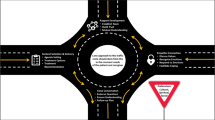Abstract
While patient-centered care and the reduction of suffering due to cancer are primary goals of the NCI, improvement in the delivery of patient-centered communication has been identified as a key NCI research priority. As research on patient-centered communication evolves, the potential contributions of programs such as the National Cancer Institute’s (NCI) Cancer Information Service (CIS) cannot be overlooked. The purpose of this paper is to describe how the six core functions of patient-clinician communication described in the literature (fostering healing relationships, exchanging information, responding to emotions, managing uncertainty, making decisions and enabling patient-self management) are embedded in the work of the CIS. The communication process used by the CIS to extend the patient-centered communication role of the clinician will be discussed. CIS training and quality management systems will be described. Lastly, suggestions for the role of CIS in future health information delivery and research will be explored.
Similar content being viewed by others
References
Adler NE, Page AEK, eds. Institute of Medicine (IOM), (2008) Cancer care for the whole patient: meeting psychosocial health needs. National Academies Press, Washington
Albrecht TL, Eggly SS, Gleason ME, Harper FW, Foster TS, Peterson AM, Orom H, Penner LA, Ruckdeschel JC (2008) Influence of clinical communication on patients’ decision making on participation in clinical trials. J Clin Oncol 26:2666–2673
American Customer Satisfaction Index (ACSI) Scores for U.S. Federal Government. 2007. http://www.theacsi.org/index.php?option=com_content&task=view&id=175&Itemid=177, accessed 08 February 2010
Arora NK (2003) Interacting with cancer patients: the significance of physicians’ communication behavior. Soc Sci Med 57:791–806
Arora NK (2009) Assessment of the “patient-centeredness” of patient–provider communication in the U.S. http://hints.cancer.gov/hints2009/arora.pdf, accessed 15 January 2010
Back AL, Arnold RM, Baile WF, Tulsky JA, Barley GE, Pea RD, Fryer-Edwards KA (2009) Faculty development to change the paradigm of communication skills teaching in oncology. J Clin Oncol 27:1137–1141
Back AL, Arnold RM, Tulsky JA, Baile WF, Fryer-Edwards KA (2003) Teaching communication skills to medical oncology fellows. J Clin Oncol 21:2433–2436
Baile WF, Lenzi R, Kudelka AP, Maguire P, Novack D, Goldstein M, Myers EG, Bast RC Jr (1997) Improving physician–patient communication in cancer care: outcome of a workshop for oncologists. J Cancer Educ 12:166–173
Baile W, Aaron J (2005) Patient-physician communication in oncology: past, present, and future. Current Opinions in Oncology 17:331–335
Bright MA (2007) The National Cancer Institute’s Cancer Information Service: a premiere cancer information and education resource for the nation. J Cancer Educ 22:S2–S7
Brown RF, Bylund CL (2008) Communication skills training: describing a new conceptual model. Acad Med 83:37–44
Committee on Quality of Health Care in America, Institute of Medicine (IOM), (2001) Crossing the quality chasm: a new health system for the 21st century. National Academies Press, Washington
Eggly SS, Albrecht TL, Kelly K, Prigerson HG, Sheldon LK, Studts J (2009) The role of the clinician in cancer clinical communication. J Health Commun 14(Suppl 1):66–75
Epstein RM, Street RL (2007) Patient-centered communication in cancer care: promoting healing and reducing suffering. http://outcomes.cancer.gov/areas/pcc/communication/monograph.html, accessed 29 January 2010
Fallowfield LJ, Hall A, Maguire GP, Baum M (1990) Psychological outcomes of different treatment policies in women with early breast cancer outside a clinical trial. BMJ 301:575–580
Fallowfield L, Jenkins V, Farewell V, Saul J, Duffy A, Eves R (2002) Efficacy of a Cancer Research UK communication skills training model for oncologists: a randomised controlled trial. Lancet 359:650–656
Hesse BW (2009) Cancer communication: status and future directions. J Health Commun 14(Suppl 1):109–127
La Porta M, Hagood H, Kornfeld J, Treiman K (2007) Evaluating the NCI’s Cancer Information Service Contact Centers: meeting and exceeding the expectations of the public. J Cancer Educ 22:S18–S25
Merckaert I, Libert Y, Razavi D (2005) Communication skills training in cancer care: where are we and where are we going? Curr Opin Oncol 17:319–330
Mishel MH (1999) Uncertainty in chronic illness. In: Fitzpatrick JJ(ed) Annual review of nursing research. Springer, New York, pg 269.
Morse DS, Edwardsen EA, Gordon HS (2008) Missed opportunities for interval empathy in lung cancer communication. Arch Intern Med 168:1853–1858
Ong LM, de Haes JC, Hoos AM, Lammes FB (1995) Doctor–patient communication: a review of the literature. Soc Sci Med 40:903–918
Ong LM, Visser MR, Lammes FB, de Haes JC (2000) Doctor–patient communication and cancer patients’ quality of life and satisfaction. Patient Educ Couns 41:145–156
Perocchia RS, Galassi A, Jacobs R, Krauss N, LeMaitre MK, Rutledge S (2007) The NCI’s Cancer Information Service Staff Training Program: a foundation for excellence. J Cancer Educ 22:S8–S17
Siminoff LA, Ravdin P, Colabianchi N, Sturm CM (2000) Doctor–patient communication patterns in breast cancer adjuvant therapy discussions. Health Expect 3:26–36
Squiers L, Finney Rutten LJ, Treiman K, Bright MA, Hesse B (2005) Cancer patients’ information needs across the cancer care continuum: evidence from the cancer information service. J Health Commun 10(Suppl 1):15–34
Stewart MA (1995) Effective physician–patient communication and health outcomes: a review. CMAJ 152:1423–1433
Street RL Jr, Makoul G, Arora NK, Epstein RM (2009) How does communication heal? Pathways linking clinician–patient communication to health outcomes. Patient Educ Couns 74:295–301
Woolf SH, Chan EC, Harris R, Sheridan SL, Braddock CH 3rd, Kaplan RM, Krist A, O’Connor AM, Tunis S (2005) Promoting informed choice: transforming health care to dispense knowledge for decision making. Ann Intern Med 143:293–300
Author information
Authors and Affiliations
Corresponding author
Additional information
This work has been supported by the National Cancer Institute contract NO2-CO-51101.
Rights and permissions
About this article
Cite this article
Perocchia, R.S., Hodorowski, J.K., Williams, L.A. et al. Patient-Centered Communication in Cancer Care: The Role of the NCI’s Cancer Information Service. J Canc Educ 26, 36–43 (2011). https://doi.org/10.1007/s13187-010-0121-y
Published:
Issue Date:
DOI: https://doi.org/10.1007/s13187-010-0121-y




